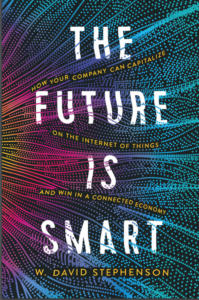I missed this in-depth article on the Union Pacific Railroad’s extensive #IoT applications — and more impressive goals, and I thought you’d appreciate what this 150-year old company is doing.
They’ve already been able to cut bearing-related derailments by 75% (aside: years and years ago I was the associate producer on a WCVB-TV documentary on the problems of the railroads. One of my lasting memories was about the fires that can start by “hot boxes” in the bearings). That’s done by a combination of devices that are linked to UP headquarters through fiber optics: infrared sensors placed every 20 miles along the track, trackside microphones “to listen for growling bearings,” and, for its biggest an heaviest coal trains, it takes ultrasonic images to see inside the wheels.
But CIO Lynden Tennison want to do more. He’d like to replace the trackside sensors with “smart dust” ones plastered all over the wheels, bearings and other places that would record conditions and report them in real time wirelessly. He estimates that the sensors would have to work on a railcar 5-7 years without replacement, so the energy needs of current sensors are too much for widespread deployment.
The article illustrates the current state-of-the-art in IoT: trying to increase the railroad’s velocity — IT’s core mission — is ” a constant balance between analytics-driven automation and human judgment.” Take the data on bearings: 20 million daily readings lead to about 1,500 daily alerts that the staff examines, after that data is fed through sophisticated algorithms (of those alerts, about 10 are serious enough that the driver needs to stop the train ASAP for inspection!).
The railroad is still hampered by imperfect data, especially on train locations (no, although they use GPS, it isn’t adeuate to pinpoint trains’ location).
Author Chris Murphy concludes on a cautionary note about the current status of the #IoT:
“This kind of reality check on the Internet of Things is essential. People’ faith in emerging technology gets to the point that they start to assume that all ata is gettable, that all of it i crunchable to turn questions into answers, like those magical computers that pit out the answer in spy movies.
“Union Pacific points to what’s possible. Yet at the same time, its doal of driving growth through greater use of analytics, sensors, and networked machines shows how much work still lies ahead.”
Yes, there’s still a lot to do, especially in micro-miniaturing sensors and their power sources, but if a 150-year old railroad can achieve such results, what’s your company’s excuse for not beginning to adopt an #IoT strategy??

